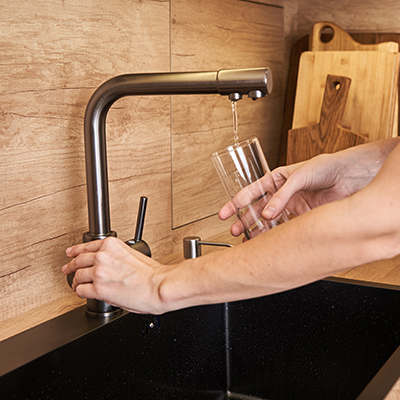
Introduction
One of the most basic, yet most confusing things that caravanners face when buying their first caravan – is understanding the weights specified by the caravan manufacturer. Understanding what they mean and how they relate to the tow vehicle is very important.
In the past when the industry was less regulated, there were a large number of accidents caused due to overloaded or in some cased improperly loaded trailers and caravans. However strict regulations are now followed and they are enforced without exception in all states and territories throughout Australia. However the legislation only states, what you can and cannot do. To the common person the various weights specified by the caravan, and tow vehicle manufacturer is all but Latin.
The most common cause of confusion is the lack of understanding of the two different types of weights specified (relating to the caravan and relating to the tow vehicle). Once this basic difference is bought to light, the relationships between the various weights and their notoriously similar acronyms become quite evident.
Weights Specified by Caravan Manufacturer
The weights that are mentioned in this section are all specified by the manufacturer of the caravan. They are required by to be etched on the VIN plate and should be mechanically fastened to a permanent fixture of the caravan body (usually the chassis).

Fig1. Caravan Weights
Ball Weight
Weight at the tow ball or coupling of the caravan, where it attaches to the tow vehicle is called Ball Weight. The ball weight specified by the manufacturer is when the van is empty. Depending on how a caravan is loaded up, and the distribution of the caravan about the axles – the ball weight can either increase or decrease. Caravan manufacturers also specify a maximum permissible ball weight, which is either 10% of the ATM (see below), or a maximum of 350kg – whichever is lower.
Ball weight for stable travel is generally recommended to be around 8-12% of the weight of the caravan. Too high a ball weight and the front of the tow vehicle is lifted up, causing reduction in steering response, and a tendency to understeer when taking a turn. However if the ball weight is too low, it can cause the trailer to become unstable and sway a lot. It s always recommended to check the ball weight after loading up a caravan to ensure that the ball weight is satisfactory.
In Fig.1 above,
Ball Weight = A
Tare
This is the weight of the empty caravan specified when it is completed by the manufacturer. According to the Vehicle Standards Bulletin for Building Small Trailers – “It is the total mass of the trailer when not carrying any load, but when ready for service, unoccupied (if relevant) and with all fluid reservoirs (if fitted) filled to nominal capacity except for fuel, which shall be 10 litres only, and with all standard equipment and any options fitted.” The bulletin specifically mentions that “fluid reservoirs”, DO NOT include fresh water and waste water tanks. Even the gas bottles are empty when the Tare is determined.
When adding additional options to your caravan – always confirm with the manufacturer whether the additions, will be included in the Tare weight. Some manufacturers do not include additions such as extra jerry can holders, generators, bike racks…etc. in the Tare weight. They work around the VSB rule mentioned above by labelling these items as “optional extra”, which are not part of the standard equipment or “options” of the caravan.
In Fig.1 above,
Tare Weight = tow ball weight + weight at axles = A + C
Payload
Payload is defined as the total combined weight of all items, that are loaded in the caravan. Payload includes any item added to the caravan, that is not part of the Tare weight specified by manufacturer. This includes – water, fuel. food, clothes, annex equipment…etc. Caravan manufacturers are required by law to provide a maximum permissible payload, that must be clearly stamped on the VIN plate of the caravan. The Caravan Industry Association of Australia recommends a minimum payload of 300kg for single axle, and 400kg for tandem axle caravans. Caravan manufacturers usually only provide the minimum recommended payload. However, depending on the weight of the caravan and the rating of its axle and suspension components, some manufacturers will provide a 600kg payload, and in extremely rare cases even more.
In Fig.1 above,
Payload = B
GTM (Gross Trailer Mass)
GTM is the maximum permissible mass (or weight) of the loaded trailer on the axles of the caravan only. In other words the GTM is the combined effect of the caravan weight and the payload on the axles. Because the GTM is the weight that the axle or suspension has to withstand, most suspension and axle component ratings are specified in “maximum GTM”. The GTM also determines the rating of the rims and tyres used on the caravan.
It must be noted that the GTM of a caravan at any given point is determined by the payload at the time.
In Fig.1 above,
GTM = Payload + Axle Weight = B + C
ATM (Aggregate Trailer Mass)
ATM is the maximum mass of the loaded caravan when carrying the maximum permissible payload as specified by the manufacturer. The ATM of a caravan is fixed, and stamped by the manufacturer on the VIN plate of the caravan. The ATM includes the weight imposed by the caravan on the coupling or tow vehicle, when the caravan is perfectly horizontal.
In Fig.1 above,
ATM = Ball Weight + Payload + Axle Weight = A + B + C
Weights Specified by Tow Vehicle Manufacturer
The weights that are mentioned in this section are all specified by the manufacturer car or tow vehicle. They are mentioned in the car’s handbook and are usually tabulated and quite detailed. Understanding these weights and what they mean means knowing the limitations of your car. Similar to a caravans the car also has a Tare weight or Kerb weight, which is the empty weight of the completed car, with all standard options fitted.

Fig2. Caravan and Tow Vehicle Combined Weights
GVM (Gross Vehicle Mass)
The GVM of a car is the maximum that the vehicle can weigh at any given point of time. The cars suspension, rims and tyres are designed to handle the specified GVM of the car, which acts directly on the four wheels of the car and onto the road. By subtracting the Tare or Kerb weight of the car from the GVM we can find out how much payload we can legally carry in the car.
It must be noted that the payload in a passenger vehicle includes the weight of the occupants. As a simple example – consider a car with a Kerb weight of 1950kg, and the specified GVM in the handbook at 2500kg. Then we can safely say the car has a payload of 2500-1950 = 550kg. Now, if the car has two occupants weighing 80kgs each, then we can only carry 390kg (550 – 2 x 80), of equipment in the car.
A very important note that most people are unaware of is that when the car is hooked up the a caravan, the ball weight of the caravan also acts on the car body. The ball weight also acts as part of the payload, and must be deducted from the GVM to find out how much equipment can be loaded in the car when towing. As a continuation of the example mentioned above – if the car is towing a caravan with ball weight 300kg, then we can only load 90kg worth of equipment in the car!!!!
Once you add the weight of added equipment (bull bars, roof racks slideout fridges…etc.) it brings us dangerously close to the GVM limit of the car. Due to the lack of knowledge of how it all works, some people unwittingly end up overloading their car beyond the legal limit.
In Fig.2 above,
the GVM of the car at any point is the sum of the weight of car, weight of occupants and other equipment inside the car, and the ball weight of the caravan.
GVM = E = A + D
Towing Capacity
The towing capacity is the mentioned in the vehicle handbook. In Australia, by law the un-braked towing capacity of a car is always capped at 750kg. Depending on the car’s chassis or body construction, and the power of the engine the braked towing capacity can vary from 2300kg to upto 3500kg. Due to 99% of cars having their towing capacity capped at 3500kg, caravan manufacturers always try to keep the ATM of their models below this limit.
There are some American Manufactured truck cars (Dodge Ram, Ford F150/250, Chevrolet Silverado…etc.), that can tow 4500kg to 6000kg depending on the model series. You can see them towing around some massive caravan setups, usually with 2-3 slideouts and even triple axle suspensions.
GCM (Gross Combination Mass)
The GCM is the maximum combined weight of the car and the caravan together. This is probably the second most important weight to know apart from the towing capacity in order to accurately determine exactly how much equipment to carry. Most of us naturally assume that the GCM is the sum of the GVM and the towing capacity of the car in question. However this is rarely the case. The towing capacity mentioned by the car manufacturer is not always realistic.
For example, a Ford Ranger PX Dual Cab as the following weights mentioned in the handbook:
Tare = 2200
GVM = 3200kg
Maximum Braked Towing Capacity = 3500kg
GCM = 6000
From the above information we can calculate the following:
Maximum Payload when car is not hooked up to a caravan = 3200 – 2200 = 1000kg
Maximum Weight of the car when hooked up to a caravan weighing 3500kg = 6000 – 3500 = 2500kg
Hence, payload when towing a caravan weighing 3500kg = 2500 – 2200 = 300kg
This means the combined weight of
- the occupants
- the fuel
- the ball weight
- any other optional extras and equipment fitted
should not exceed 300kg! Which is totally impossible. In the case of this car, a more practical maximum towing capacity would be 3000kg. This would give us a 500kg payload even if the ball weight of the caravan is 300kg.
The weights and their relationships with each other, can still be too much to understand for some people. Please feel free to email us at Paramount Information any questions regarding the weight limitations of your caravan or tow vehicle.


